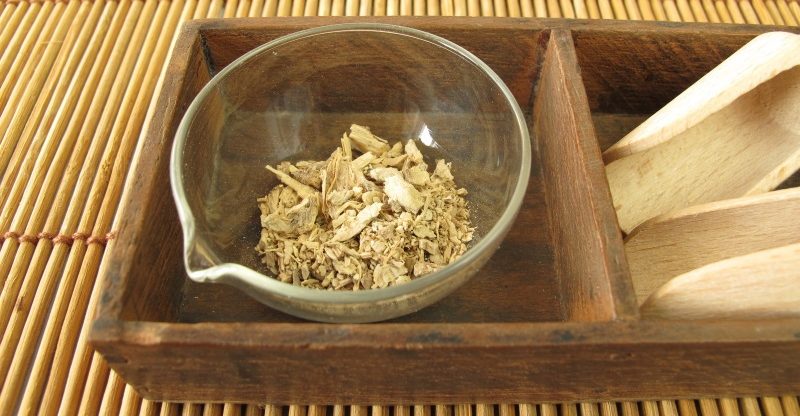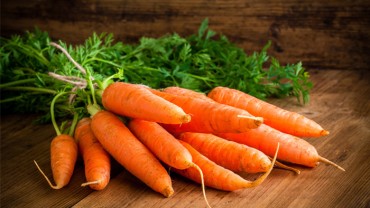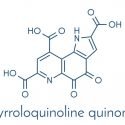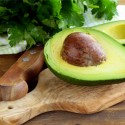12 Evidence-Based Benefits of Kava
The indigenous people of the South Pacific have long known and enjoyed the benefits of the kava plant.
Now that this herbal treatment has reached mainstream culture, others are also beginning to appreciate its effects.
As a natural treatment for many mental health problems, as well as physical symptoms and conditions, kava has a long history of use to heal and treat the body.
We will describe how this powerful plant could help you.
What is Kava Kava?
Kava kava, which is known by kava, is a plant that grows natively in the tropical climates of the South Pacific islands.
Piper methysticum is the scientific name for this plant, whose roots have unique properties which makes it an excellent treatment for several illnesses and disorders, including mental health problems.
When mixed with water, an extract of the kava root creates a psychotropic concoction that can create feelings of euphoria, similar to those induced by alcohol.
When taken in large quantities, kava can cause liver damage.
Therefore, you should use this herbal treatment as directed.
You can now purchase kava in many different forms, including root extract or capsules, tinctures, root powder, concentrated paste, or tea, which is the most common use by most people.
The tinctures and powders tend to produce stronger effects than other forms of the herb, with kava paste being the most concentrated and providing the most substantial results.
Kava is used to reducing anxiety, lower stress, and improve sleep quality.
Medical researchers have found many other potential health benefits that this plant has to offer.
History of Kava
Pacific Islanders have traditionally used a paste made from kava root that can be mixed with water or coconut milk to create a relaxing and enjoyable drink.
Kava has been used as a part of religious and cultural ceremonies for generations because it can lead to an altered state of consciousness that allows one to become open to ideas or suggestions.
The scientific name for kava, Piper methysticum, is Latin for intoxicating pepper.
However, it is known by many different names in the various islands on which it grows.
Captain Cook bestowed this modern-day name on the kava plant when he was introduced to it by the natives on his many expeditions.
The drink that is traditionally made from kava root is mildly sedative, like moderate anesthesia, and has entheogenic properties.
People in the tropical regions where kava grows still enjoy this drink for social occasions, imbibing it in the same way that Westerners do with alcohol.
Among the traditional uses for kava were for medicinal reasons, to encourage male bonding, as an alternative to consuming alcohol or other drugs and to establish relationships with other members of your cultural group.
When kava is overused, it can, however, lead to fatigue and malaise, encouraging laziness or inactivity.
The taste of kava can be quite bitter. It takes some time to get used to it.
Because it has properties that relax the body and lead to a state of altered consciousness, there is cause for concern that kava can be abused, just like other substances that change your mind.
Some areas of the world strictly enforce kava use as a controlled substance, while others only offer cautions and warnings.
How Kava Works
Kava is known to affect your limbic system, which is the part of your nervous system that controls your emotions.
By producing muscle-relaxing, analgesic, and anxiolytic effects, kava provides a state of sedation for your body and your mind (1).
These effects will be influenced by the concentration of the kava compounds, as well as the type of preparation and whether you eat or drink other foods while taking kava.
The kavain and methysticin found in kava work to block sodium ion channels, which leads to a decrease in overall cell excitability.
These compounds calm the release of excitatory neurotransmitters and, therefore, create a calming effect on the brain (2).
Other compounds in kava increase the production of gamma-Aminobutyric acid or GABA.
GABA is an inhibitory neurotransmitter, which effectively slows down brain function and leads to the anti-anxiety and sedative effects that people seek when using kava (3).
By lowering the levels of certain neurotransmitters in the brain, known to increase depression and anxiety, kava can be used to treat those conditions, as well as ADHD and other mental health disorders (4).
How to Take Kava
There are now many ways that you can take kava.
It is available in many different forms.
The most common are teas, capsules, powder, and liquids.
These products are generally made by extracting the active ingredient in kava, kavalactones, from the plant using some kind of solvent.
Kava tea is the most readily available form of this plant for home use.
It is sometimes combined with other herbs but can be purchased as a single-ingredient product.
Tea is made using hot water to steep the herb, then drinking it slowly.
Be sure to avoid beverages that use “proprietary blends.”
These products do not disclose the amount of kava you are getting in your tea.
Kava liquids and tinctures come in small bottles and have a dropper that you can use to take it directly or to mix with juice or another liquid.
The liquid has a bitter taste, so some people prefer to mask that flavor.
Take liquids in very small, controlled doses, since they are more concentrated than other types of kava products.
If you prefer to avoid the bitter taste of kava, you can take a capsule, which contains dried root extract.
This can be taken with food.
However, the effects are best felt on an empty stomach.
Kava Dosage
Due to the danger of liver toxicity, it is recommended that you never exceed the dosage instructions for your kava product.
For medicinal use, you should never take more than six grams of tablets or two grams per day of any powdered extract.
Since each supplement may have a different concentration of kavalactones, you should read the label carefully and follow its recommendations for daily dosage.
Kava v. Kratom
Some people are more familiar with kratom, which is an herb with effects and properties that are comparable to kava.
Both of these plants have similar relaxing effects.
While kava is known to calm you down, kratom is used to boost energy.
Kratom’s properties come from the leaves of the plant, while kava gets its power from its roots.
Both plants are commonly consumed as teas.
While both plants are known to induce euphoria, provide feelings of contentment and alertness, and also reduce stress, they work differently to produce these effects.
This is why some people choose to take them together to increase their effects.
While kava root can be mildly intoxicating, it is shown to improve mood and ease anxiety, by influencing GABA receptors and stimulating dopamine receptors in the brain.
Kratom works differently, by having a stimulating effect in small doses and a relaxing effect at higher doses.
It stimulates various opioid receptors and influencing receptors that react to serotonin and norepinephrine.
If you want the benefits of both, you can take these two herbs together, or you can use them separately to enjoy their individual differences.
Kava’s Health Benefits
Kava can be used to treat a number of mental and physical needs, including depression, anxiety, sleeplessness, and inflammation.
Kava is proving to be an effective treatment for cancer, epilepsy, and menopause while providing protective benefits for your brain.
In the section below, we explore the medical research findings, including cell studies, animal trials, and clinical studies, about the many uses for kava to treat and heal the body.
Reduces Anxiety
Perhaps one of the most significant benefits of taking kava is that it can help to reduce anxiety.
This is essential for those with crippling or debilitating levels of this disorder.
Anxiety is present in several mental health disorders and can be exhibited in many different ways.
Kava is effective in treating all types of this disorder, including generalized anxiety disorder, agoraphobia and other specific phobias (5).
Kava works on anxiety, by activating GABA-A receptors in the brain, which results in a calming effect.
The herb also inhibits the release of monoamine oxidase, which decreases levels of certain “feel good” chemicals in the brain, like serotonin, dopamine, and norepinephrine (6).
Kava also lowers the activity of beta adrenaline receptors, which relaxes muscles (7).
All of these combine to reduce feelings of anxiousness and the physical symptoms that accompany these thoughts.
Improves Symptoms of Depression
In addition to treating anxiety, kava can also help with depression.
People who are depressed often experience anxiety and fatigue and kava works in the same way that some types of antidepressants work to increase the levels of dopamine, serotonin, and GABA to reduce these symptoms.
In cell studies, kava was also shown to reduce glutamate, an excitatory neurotransmitter that can increase feelings of depression and anxiety (8).
Can Stop Cancer Growth
Preliminary research is very promising in the use of kava to stop the growth of cancer and provide protection from the development of this disease.
It has been shown to be effective against several forms of cancer, including breast, colon, bladder and prostate cancers.
In cell studies, the compounds in kava increased cell death, while also decreasing cell size in breast cancer cells (9).
This occurs because kava activates proteins known to cause cell death, like caspase 9 and cytochrome c, while also inhibiting the production of specific regulatory proteins that are responsible for the cell cycle, thus leading to cell death (10).
This is promising for preventing breast cancer metastasis.
In cell trials, compounds in kava were able to limit the supply of nutrients to tumors but block the formation of new blood vessels, as well as the invasion and transportation of cancer cells in breast tissue (11).
These compounds can decrease proteins in the cells, which provide tumor cells with energy.
In addition to being effective against breast cancer, kava compounds can also help to stop the progression of bladder cancer and colon cancer growth.
In animal trials, kava compounds, like Flavokawain A, were able to cause tumor cell death while blocking proteins that prevent tumor cell death by activating specific cancer-killing pathways in the body.
Similar compounds in kava, Flavokawain B, also blocked the growth of colon cancer cells, using similar pathway inhibitions (12).
This same compound, Flavokawain B, has also been shown to be effective at slowing prostate cancer growth.
Animal and cell trials both confirm kava’s ability to reduce the androgen receptors in prostate cells that contribute to cancer growth (13).
As more clinical research is conducted to examine the effects on kava in cancer patients, we will learn more about how this herb could be used to enhance cancer treatments and help to protect our bodies from these invasive and deadly cells.
Helps to Sleep Better
Poor sleep can lead to a wide range of medical problems and is caused by many different conditions.
Kava can help you relieve symptoms of insomnia and improve the quality of your sleep.
By lowering stress and anxiety, which both contribute to sleeplessness, kava helps patients who have sleep disturbances have less restlessness and more high-quality sleep (14).
The effects of kava’s sedating compounds are caused by their ability to block calcium ion and sodium ion channels, which increase the concentration of GABA and other neurotransmitters that promote sleep (15).
Boosts Brain Function
By activating parts of the brain that deal with cognition and emotions, kava can be used to improve many different functions related to memory and processing.
The pyrones in kava affect the hippocampus, amygdala and caudate nucleus, which can help you in tasks requiring accuracy and attention, improve your working memory and enhance your visual processing (16).
This is good news for those suffering from neurodegeneration from dementia, Parkinson’s and other diseases.
The kavalactones that are extracted from the kava plant, can help protect the brain from oxidative stress and other damage caused by these types of diseases (17).
These compounds increase the concentration of antioxidants in the brain, which reduces damage and helps maintain proper brain function, even in an aging brain (18).
Helps with Seizures
Kava may prove to be an effective anti-seizure medication for those suffering from epilepsy, according to animal trials.
By reducing motor activity, kava extract’s compounds can increase the threshold for seizure induction and enhance the effects of conventional antiepileptic drugs, like diazepam (19).
Kava is able to block seizures because it binds to GABA-A receptors and effectively blocks sodium and calcium ion channels that are relayed to seizure activity.
Makes Drug Treatment Easier
For those who are battling drug addiction and want to reduce cravings, kava may also be able to help.
By producing dopamine, the kavapyrone desmethoxyyangonin can activate the reward system and lower cravings for certain drugs that are known to influence dopamine receptors (20).
Helps with Menopause
The symptoms of menopause can make life quite uncomfortable for women suffering from this profound change in hormone levels.
Symptoms of menopause and perimenopause include insomnia, hot flashes, night sweats, irritability, and anxiety.
Kava, which is known to reduce many of these symptoms naturally, could help women who are experiencing these symptoms.
In clinical trials, kava was effective at reducing irritability, depression, anxiety, and insomnia in perimenopausal women (21).
Lowers Inflammation
Compounds found in kava have been shown to help inhibit the production of pro-inflammatory markers, leading to a reduction in this response from the immune system.
The flavokawains A and B, as well as the kavain in kava, can help to increase the production of anti-inflammatory cytokines, while also boosting immune cell production (22).
This anti-inflammatory effect can not only reduce pain and symptoms caused by prolonged inflammation but also allow the immune system to properly protect the body from pathogens and keep you healthier (23).
Additional Benefits of Kava
- Reduction in jet lag symptoms- By helping your body relax and maintain a consistent sleep pattern, even when traveling across many time zones, taking kava can help to ease jet lag symptoms and make travel easier.
- Improve kidney function- Kava is a natural diuretic, which can help allow your body to eliminate excess fluids, salts and other wastes from your system. When you have excess fluid, you can have high blood pressure or incur an increased risk of infection, so drinking kava can help keep your kidneys and bladder working well.
- Enhance smoking cessation- In addition to helping you quit other drugs, kava can also help you to quit smoking. The anti-anxiety effects of kava can help you deal with cravings and reduce the urge to smoke.
Precautions
Kava should be used with caution.
If your product contains the peel from the root, excess amounts can lead to liver toxicity.
This is not as likely if the product contains only peeled root compounds.
While there is only minimal evidence to support the claim that kava causes liver damage, you should use it as directed, until more research provides us with a clearer picture of its full properties.
The most common side effects reported with kava use are dizziness, drowsiness, headaches, fatigue, and mild indigestion.
If you take kava frequently or use it in large doses, you can experience dry eyes and skin (24).
When you stop using kava, these symptoms will disappear.
If you have anxiety, it is not recommended that you use kava as your primary form of treatment, since it is most effective when used with other, conventional medications (25).
Do not take kava with alcohol, since this can lead to liver problems and increase the effects of both substances.
As with alcohol, you should avoid driving or doing activities that require motor skills, while taking kava (26).
The use of kava can inhibit the breakdown of certain medications in some people.
The most common medication interactions with kava include caffeine, diazepam, amitriptyline, imipramine, propranolol, fluoxetine, haloperidol, morphine, and beta-blockers.
If you use these medications while taking kava, the effects may be altered and you may need to change your dosage (27).
Conclusion
The kava plant has been used for thousands of years by natives in the Pacific Islands, as part of healing and religious rites and ceremonies.
The extract of this plant’s roots has relaxing effects that can improve a number of conditions and symptoms.
When it is taken responsibly, it can help you feel better physically and mentally.
The roots of the kava plant contain compounds called kavalactones, which are proven to help lower anxiety.
Kava is similar to kratom but has additional benefits that the other plant does not have.
The many health benefits of kava root include being able to help fight cancer, reducing the size of cancerous tumors, improving immunity while lowering inflammation, reducing symptoms of anxiety and depression, improving your sleep and helping to protect your brain.
Kava can also help to fight cravings associated with drug dependency, as well as treat epilepsy.
Kava is enjoyed because it produces euphoric, intoxicating feelings that can help you relax your body and mind.
There is some potential for liver damage, if you use kava products that contain root peelings or if you use this herb above the recommended dosage.
You should talk to your doctor before using kava if you take other medications.
This is because kava can interact with some drugs.
Always read the labels on your kava products to confirm the kavalactone content you are getting in each dose and to ensure that only peeled roots are used in making the product.
As we learn more about kava’s many health benefits, its uses and recommendations are likely to increase.
Animal and cell trials have given us enough information to believe that this herb has enormous potential.
FDA Compliance
The information on this website has not been evaluated by the Food & Drug Administration or any other medical body. We do not aim to diagnose, treat, cure or prevent any illness or disease. Information is shared for educational purposes only. You must consult your doctor before acting on any content on this website, especially if you are pregnant, nursing, taking medication, or have a medical condition.
HOW WOULD YOU RATE THIS ARTICLE?





